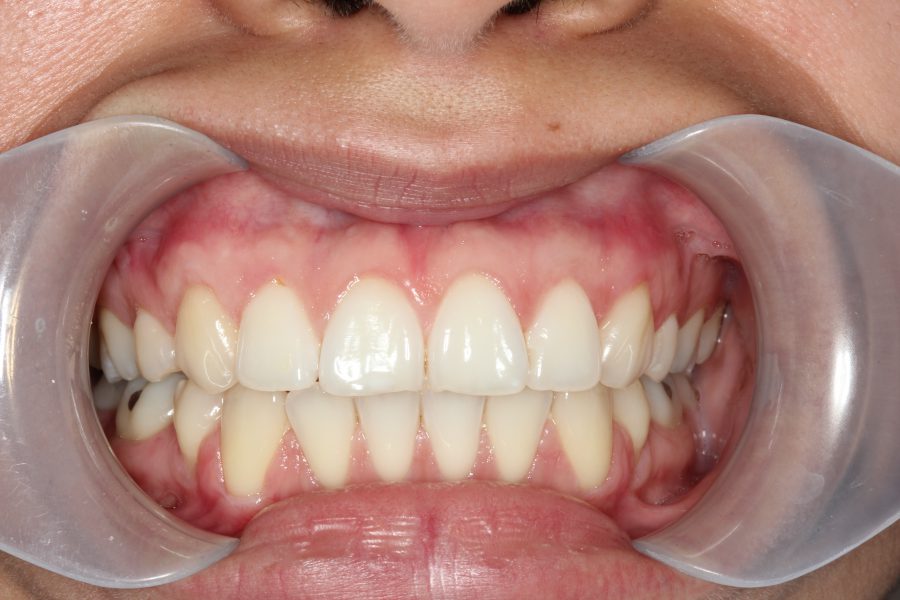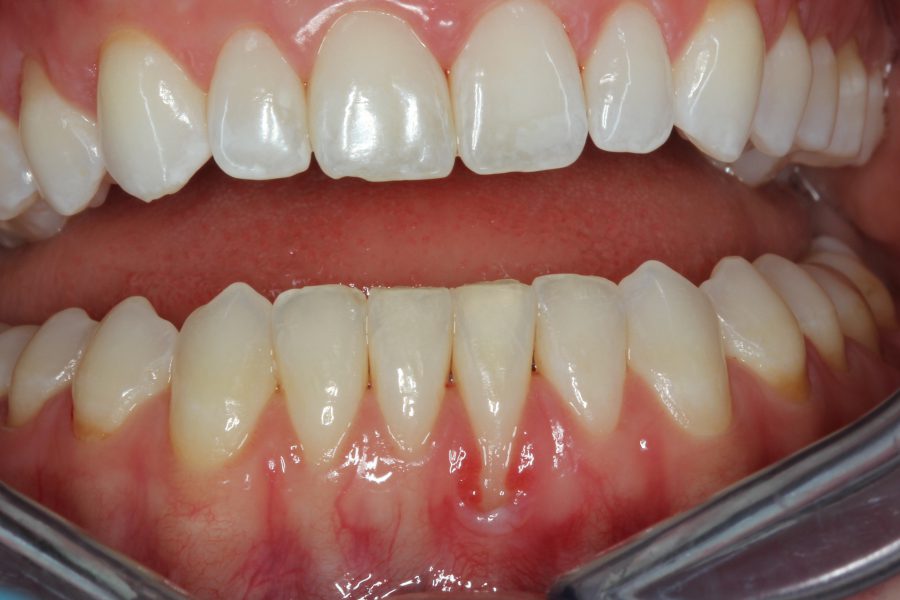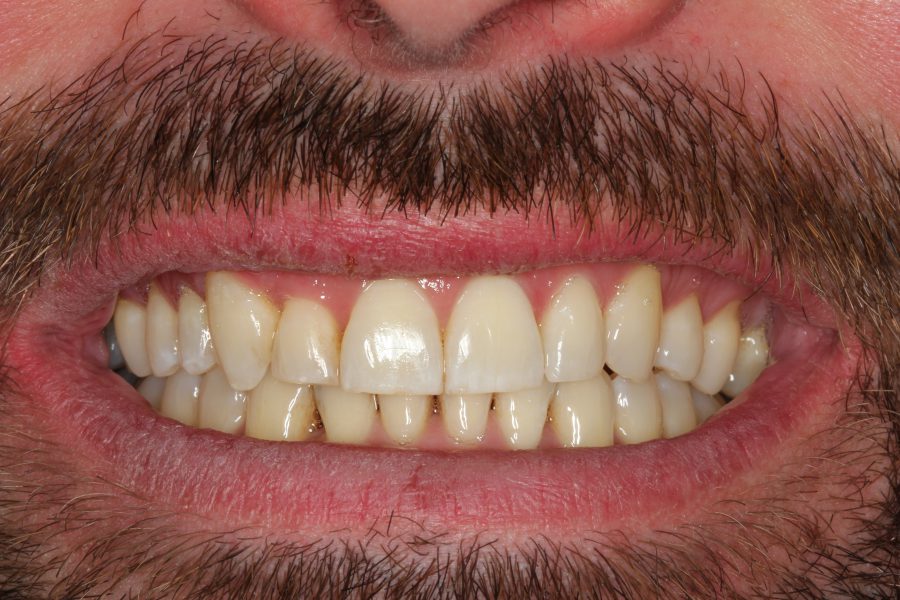PERIODONTOLOGY
The definition of gingival recession is “localized loss of clinical attachment”. Visually, a patient will observe gum recession and exposure of the root surface and teeth will consequently appear “longer”.
This root denudation may be accompanied by sensitivity to cold, hot and sour stimuli. Additionally, the exposed root surface is more susceptible to caries (tooth decay). Finally, for patients with esthetic demands (and especially for those with a high smile line) root exposure has a negative effect on the overall smile esthetics. The reason behind compromised esthetics is that gum recession and root exposure makes the teeth look unnaturally longer.
There is a number of etiologic factors that may cause gingival recession. Recession may often occur as a sequel to periodontitis. In periodontally healthy individuals recession may be related to traumatic tooth brushing, presence of aberrant frenum, tongue piercing or orthodontic treatment.
In terms of treatment, the first goal is the identification and reversal of the etiologic factor in order to prevent further progression of the recession as well as guarantee stable results post intervention. Following that, restoration of the lost gingival tissue takes place through a periodontal plastic surgery procedure. This procedure involves a harvesting of a soft tissue graft from the hard palate (roof of the mouth) in a laparoscopic, so to speak, manner. Secondary to that, the graft is placed and sutured in the area of recession.
This type of graft is called “connective tissue graft” and is considered the gold standard in recession treatment. When the conditions allow for it, as an alternative to a connective tissue graft, patients may opt for an allograft or xenograft (a commercially ready graft) in order to avoid graft harvesting. In our clinic we offer a wide variety of treatment with emphasis on microsurgery in order to maximize results and facilitate healing.



